
One-Pot Beef Stew Recipe with Hearty Red Wine Sauce
# Beef Bourguignon: A Timeless French Comfort Classic
Beef Bourguignon represents a fundamental French dish that captures the spirit of leisurely, comforting cuisine. This robust beef stew is distinguished by its luxurious red wine sauce, succulent pieces of beef, and a variety of vegetables such as mushrooms, carrots, and onions. Traditionally, it is enriched with the smoky taste of bacon, making it an incredibly indulgent dish suitable for any event.
## Flavor Profile
The taste of Beef Bourguignon is rich and inviting, presenting a delightful medley of tender beef, savory mushrooms, and a profound, slowly simmered sauce. The incorporation of red wine not only elevates the flavor but also adds depth, ensuring each mouthful feels warm and satisfying.
## Cooking Technique
Browning the beef is an essential stage in the making of Beef Bourguignon. This method cultivates deep flavors that enrich the dish’s overall decadence. Furthermore, lightly cooking the flour before adding the liquid aids in creating a smooth gravy without requiring additional thickeners.
## Recommended Tools
A **Dutch oven** serves as the perfect cooking pot for Beef Bourguignon. It evenly disperses heat, facilitating reliable browning and uniform cooking throughout.
## Serving Suggestions
Beef Bourguignon is best paired with crusty homemade bread and butter, ideal for soaking up the delicious sauce. It complements mashed potatoes, egg noodles, or buttered noodles for a well-rounded meal.
## Freezing and Storage
This dish is suitable for freezing, making it a great choice for pre-prepared lunches or batch cooking. Leftovers can be stored in an airtight container in the refrigerator for up to four days or frozen for up to three months. Reheat gently on the stovetop or in the microwave, adding a splash of broth or red wine to loosen the sauce.
## Ingredient Notes
– **Beef Chuck Roast**: The cut of choice for its tenderness and cost-effectiveness. Cut into 1-inch cubes.
– **Bacon**: Thick-cut bacon enhances flavor during the browning of the beef.
– **Vegetables**: Red or gold baby potatoes, mushrooms, carrots, and onions form the foundation of the stew.
– **Gravy**: Use a dry red wine such as Merlot, Cabernet Sauvignon, or Pinot Noir, alongside beef broth, tomato paste, garlic, and herbs.
## Variations
– For a more authentic French rendition, sauté or braise mushrooms and pearl onions separately, adding them at the end to keep their texture intact.
– Replace stewing beef with round steak or brisket, keeping in mind that these cuts may need longer cooking times.
– Swap bacon for pancetta for a subtler flavor.
– Omit the potatoes and serve the stew atop mashed potatoes or noodles instead.
## How to Make Beef Bourguignon
1. Preheat the oven to 325°F.
2. In a Dutch oven, cook the bacon over medium heat until crispy. Remove and set aside, retaining the fat in the pot.
3. Brown the beef in batches until seared, then place on a plate.
4. Sauté onions and carrots in the same pot until softened. Add flour and cook for 2 minutes.
5. Deglaze the pot with broth, scraping up any browned bits. Return the beef to the pot with wine, mushrooms, potatoes, tomato paste, garlic, and herbs.
6. Cover and bake for 2½ to 3 hours until the beef is fork-tender.
7. Stir in bacon and adjust seasoning prior to serving.
## Tips for the Best Results
– Use wine and broth at room temperature to maintain the cooking temperature.
– Ensure the beef is dry before searing to achieve a proper crust.
– Cook low and slow for the most tender meat; if it’s not tender, allow for more time.
– To thicken the stew, use a cornstarch slurry if desired.
Beef Bourguignon is not merely a dish; it’s a comforting experience, ideal for chilly weather and social gatherings. Relish this classic recipe that offers warmth and contentment at the table.

Cookbooks on Sale for the Holiday Period
**Culinary Expeditions in a Compact Kitchen**
In the vibrant realm of gastronomy, where grand kitchens and premium appliances frequently capture attention, there exists a distinctive and uplifting story: the tale of “Compact Cooking.” This narrative unfolds within a diminutive, closet-sized kitchen, where imagination and a love for food take the forefront.
**The Birth of Compact Cooking**
The adventure commenced with a straightforward realization: meals had grown tedious, with the same handful of dishes cycled repetitively. This moment of clarity ignited a longing for transformation, a quest to delve into the expansive realm of tastes and cuisines. The hurdle, however, was the restricted space—a tiny kitchen that could scarcely house more than one individual at a time.
**Accepting the Challenge**
Rather than perceiving the limited kitchen as a drawback, it evolved into a springboard for creativity. The confines of space fostered a concentration on ease and effectiveness. Each dish was thoughtfully selected and modified to suit the limitations of the kitchen, demonstrating that tasty and varied meals could be prepared without the benefit of ample space.
**Discovering New Tastes**
The essence of Compact Cooking resides in the discovery of novel recipes. From unusual global cuisines to inventive spins on beloved classics, the kitchen morphed into a flavor laboratory. The journey included researching, experimenting, and occasionally stumbling, but always learning and progressing.
**Building a Culinary Network**
Compact Cooking is not solely a personal endeavor; it has flourished into a community of individuals with shared enthusiasm for cooking in restricted spaces. Through a blog and social networking, recipes and experiences are exchanged, motivating others to embark on their culinary journeys, regardless of kitchen dimensions.
**The Delight of Cooking**
Ultimately, Compact Cooking stands as proof of the joy found in cooking. It illustrates that a passion for food surpasses physical constraints. With creativity, resolve, and a readiness to experiment, even the tiniest kitchen can transform into a realm of culinary pleasure.
In summary, Compact Cooking is a tribute to the craft of cooking within a small environment. It inspires us to break away from habits, discover new tastes, and take pleasure in the journey of preparing and sharing meals. Whether you’re in a spacious kitchen or a cozy corner, the adventure of cooking is imminent.
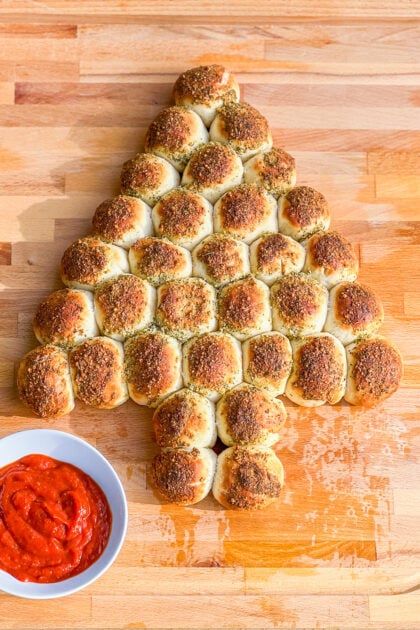
Garlic Pull-Apart Bread in the Form of a Christmas Tree
### Pull Apart Garlic Knot Christmas Tree: A Joyful Holiday Appetizer
If you’re in search of a playful holiday appetizer that’s simple to prepare, this pull apart garlic knot Christmas tree is just what you need. The holiday season often sparks friendly rivalry at potlucks and festive gatherings, and this cheerful bread tree is a head-turning dish that is bound to wow your guests.
#### Ingredients
– **Pizza Dough**: Pre-made pizza dough is a game-changer during the hectic holiday period.
– **Egg Wash**: A blend of egg and water to achieve a glossy, golden appearance.
– **Mozzarella Sticks**: Chopped into bits to create cheesy surprises in each knot.
– **Butter and Garlic**: A herby, garlicky butter brushed on after baking. Fresh basil imparts a pizza essence, but parsley or rosemary may also be used.
#### How to Make It
1. **Preheat the Oven**: Heat the oven to 450°F and prepare a large baking sheet with parchment paper.
2. **Prepare Cheese**: Slice mozzarella cheese sticks into 1-inch pieces.
3. **Roll Out Dough**: Dust a surface with flour and roll the pizza dough to about 1/4 inch thick. Cut into 30 squares (2 inches by 2 inches).
4. **Shape the Knots**: Place a cheese piece in the center of each dough square and pinch the dough around it to form a ball.
5. **Arrange the Tree**: Position the balls seam-side down on the baking sheet to form a Christmas tree shape, starting with two for the trunk and layering up to one at the top.
6. **Bake**: Brush the balls with the egg wash and bake for 15-20 minutes until they turn golden brown.
7. **Make Garlic Butter**: While baking, melt butter and incorporate minced garlic, parmesan, and chopped basil.
8. **Finish and Serve**: Brush the baked tree with garlic butter and serve warm.
#### Baking Pan
A large baking pan, at least 13″x18″, is advisable for this recipe.
#### Why Make This Tree?
This pull apart tree not only appears charming but is also remarkably easy to make, particularly with store-bought elements. It’s ideal for busy December days when your schedule is tight. If your grocery store doesn’t stock ready-made pizza dough, consider reaching out to a local pizza shop for some.
#### Dipping Suggestions
For those who enjoy dipping, this tree goes excellently with classic pizza marinara or ranch dressing.
This pull apart garlic knot Christmas tree is not just a tasty appetizer but also a playful and festive centerpiece for any holiday gathering. Enjoy the joy it brings as you share this delightful offering!
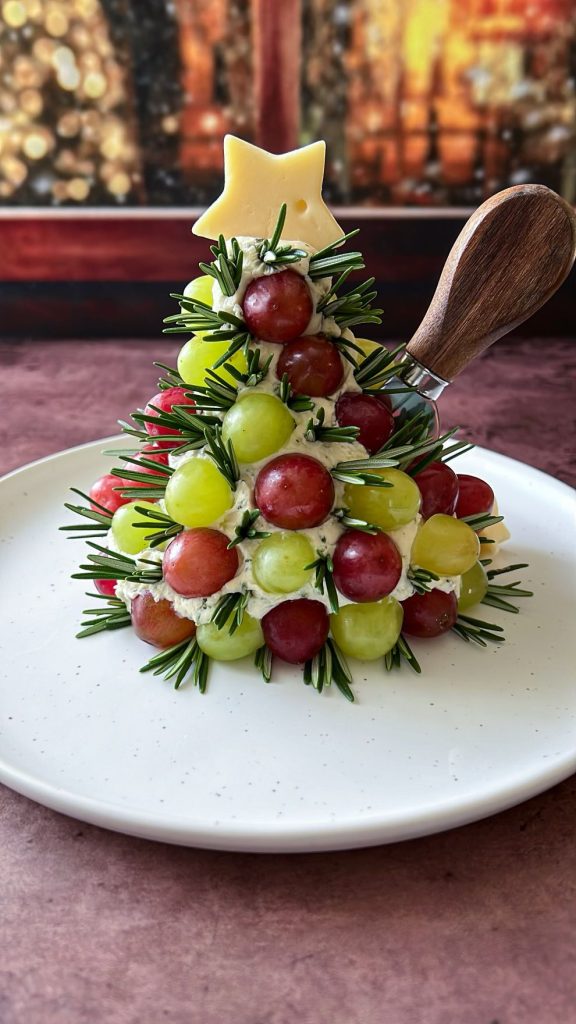
Compilation of Joyous Festive Recipes
# The Ultimate Recipes for the Ideal Holiday Feast
The festive season is approaching, and for many, this time of year represents family, friends, and, naturally, delightful dishes. Whether you’re throwing a gathering or joining one, it’s vital to have a variety of recipes from breakfast through dessert. Here’s a resource to assist you in crafting the ideal holiday spread.
## Breakfast and Brunch
Begin your holiday days with a satisfying breakfast or brunch. Think about dishes such as:
– **Eggnog French Toast**: A joyous variation on a traditional breakfast meal, ideal for a snug morning.
– **Cranberry Orange Scones**: These scones are filled with seasonal flavors and pair well with a cup of coffee.
– **Breakfast Casserole**: Simple to make ahead, this dish blends eggs, cheese, and your choice of sausage or vegetables.
## Snacks and Appetizers
Keep your guests pleased with a selection of snacks and starters:
– **Festive Cheese Board**: Provide a variety of cheeses, nuts, fruits, and crackers for an easy yet refined appetizer.
– **Stuffed Mushrooms**: These small bites are packed with a flavorful blend of cheese, herbs, and breadcrumbs.
– **Spiced Nuts**: A sweet and spicy treat that’s ideal for snacking throughout the day.
## Main Course
For the highlight of your holiday meal, consider these choices:
– **Prime Rib Roast**: A timeless option that never fails to impress. Pair with a rich au jus and horseradish sauce.
– **Glazed Ham**: A sweet and savory choice that’s easy to make and always a crowd favorite.
– **Roast Turkey**: Classic and ageless, serve it with all the accompaniments for a complete holiday dinner.
## Sides
Side dishes give you the opportunity to be inventive. Here are some suggestions:
– **Garlic Mashed Potatoes**: Rich and tasty, these are essential for any holiday gathering.
– **Roasted Brussels Sprouts with Bacon**: A wonderful way to savor this seasonal vegetable.
– **Sweet Potato Casserole**: Topped with marshmallows or pecans, this dish is both delightful and savory.
## Desserts
No holiday spread is complete without desserts. Indulge in these sweet delights:
– **Pumpkin Pie**: A holiday classic, serve with whipped cream for the ideal conclusion to your meal.
– **Chocolate Yule Log**: A festive and stunning dessert that’s bound to please.
– **Holiday Cookies**: From sugar cookies to gingerbread, there’s a cookie for everyone. Take a look at my [Holiday Cookie Guide](https://www.closetcooking.com/21-cookies-for-holidays/) for additional ideas.
## Homemade Holiday Food Gifts
If you’re seeking homemade holiday food gifts, consider:
– **Jams and Preserves**: A sweet present that can be savored long after the festive season.
– **Infused Oils and Vinegars**: Great for the enthusiastic cook, these enhance the flavor of any dish.
– **Homemade Chocolates**: An indulgent treat that’s sure to be valued.
For more inspiration, check out my [Homemade Holiday Food Gifts](https://www.closetcooking.com/9-homemade-holiday-gift-ideas/) guide.
With these recipes and suggestions, your holiday season is guaranteed to be filled with delectable dishes and treasured moments. Enjoy the celebrations and happy cooking!
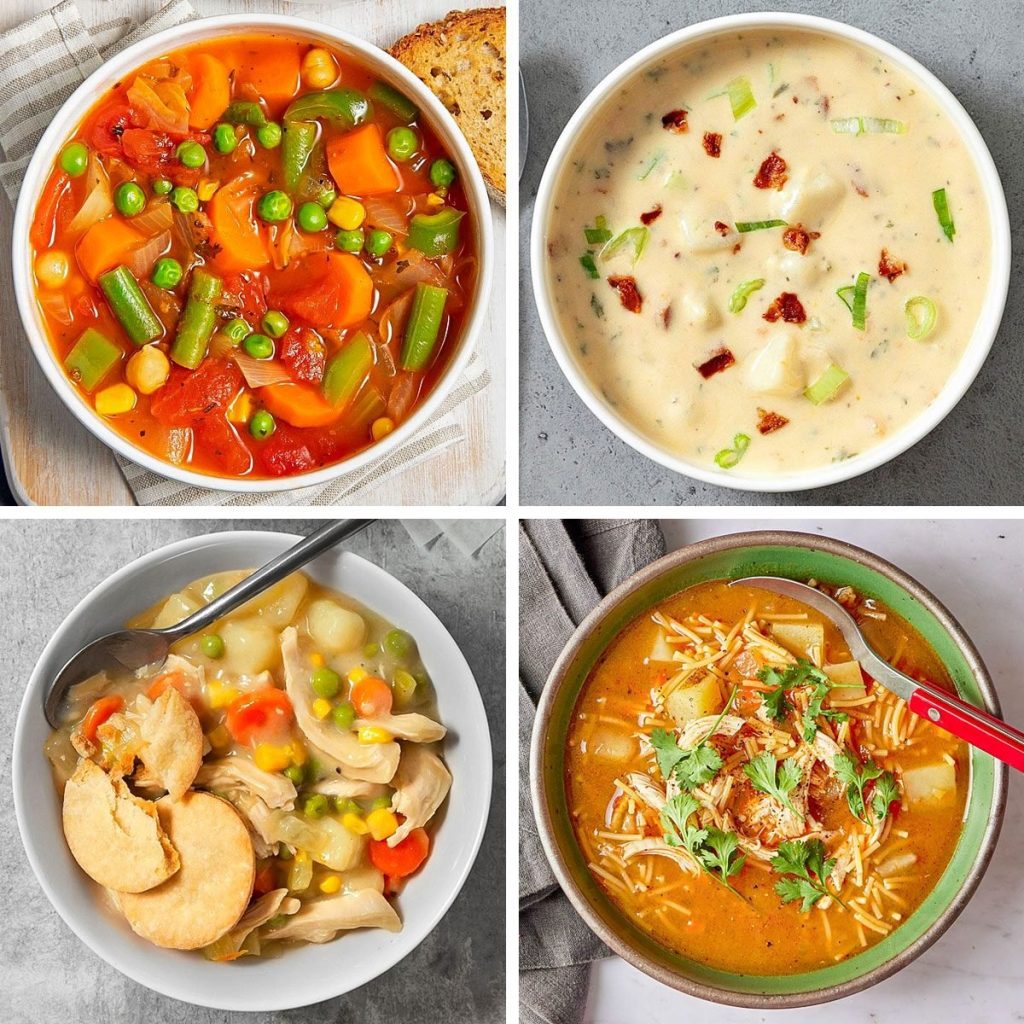
Easy Recipe for a Warm Morning Favorite
# Eggs Benedict: The Ultimate Brunch Recipe
Eggs Benedict is a timeless brunch favorite that merges sophistication with comfort, making it perfect for holidays, weekends, or memorable events. This scrumptious recipe showcases smooth hollandaise sauce, savory ham, and delicately poached eggs, all set atop a toasted English muffin. Despite its refined look, Eggs Benedict is surprisingly simple to make, taking only about 30 minutes from start to finish.
## What is Eggs Benedict?
Eggs Benedict features a toasted English muffin adorned with a slice of Canadian bacon, a flawlessly poached egg, and a drizzle of luxurious hollandaise sauce. This dish not only looks appealing but also provides a beautiful balance of flavors and textures.
### Key Features:
– **Skill Level**: Easy for beginners, thanks to a simple blender hollandaise sauce and an uncomplicated poaching technique.
– **Ingredient Swaps**: Canadian bacon can be substituted with ham, smoked salmon, or crispy bacon.
– **Time-Saving Tip**: For speedy assembly, consider using pre-made hollandaise sauce or pre-sliced Canadian bacon.
## Ingredient Notes
1. **English Muffins**: Any variety of English muffin performs well. In a pinch, toasted or halved dinner rolls can suffice.
2. **Canadian Bacon**: Options include ham, smoked salmon, or crispy bacon.
3. **Eggs**: Fresher eggs retain their shape better during poaching. Use a slotted spoon to gently lift them from the water.
4. **Hollandaise Sauce**: While store-bought sauce is a convenient option, homemade blender hollandaise offers unmatched flavor and texture.
5. **Variations**: Try variations like incorporating creamy spinach (Eggs Benedict Florentine) or salmon (Eggs Benedict Royale) for a personalized touch.
## The Simplest Hollandaise Sauce
Creating hollandaise sauce is easy and can be accomplished in a blender within minutes. If you prefer to avoid raw egg yolks, you may choose a packet mix or the double boiler method.
### Steps to Prepare Hollandaise:
1. Combine egg yolks, fresh lemon juice, and seasonings in a blender.
2. Blend on low while gradually adding melted butter until the mixture is thick and creamy.
## How to Prepare Eggs Benedict
### Instructions:
1. **Make Hollandaise**: Prepare the hollandaise sauce and set it aside.
2. **Toast Muffins**: Position English muffins and Canadian bacon on a sheet pan and broil until lightly toasted.
3. **Poach Eggs**: Poach the eggs and place them atop each half of the toasted English muffins with Canadian bacon.
4. **Serve**: Season each half and drizzle with hollandaise sauce. Serve promptly.
## Tips for Perfect Eggs Benedict
– Add a teaspoon of vinegar to the poaching water to help the egg whites stay intact.
– To prep in advance, poach eggs beforehand, cool in ice water, and reheat in simmering water for a minute.
– Keep a gentle simmer in the poaching water to prevent ragged egg whites.
– Drain poached eggs on paper towels before adding them to the muffins.
– If hollandaise thickens too much, whisk in a small splash of warm water to adjust the consistency.
## How to Store and Reheat
– Refrigerate poached eggs in cold water for up to two days. Toasted muffins and Canadian bacon can be stored separately for up to four days.
– Reheat poached eggs by placing them in simmering water for 30 to 60 seconds.
– Hollandaise sauce is best enjoyed fresh but can be gently reheated with a splash of warm water if needed.
## Conclusion
Eggs Benedict is a flexible and appetizing brunch choice that can be tailored to accommodate various preferences. Whether you’re serving it for a special event or a leisurely weekend breakfast, this dish is guaranteed to impress. Savor the delightful combination of flavors and the joy of crafting a classic brunch delight!
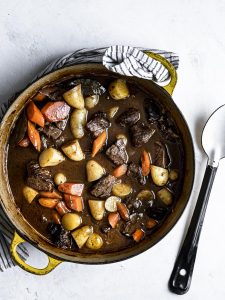
One-Pot Beef Stew Recipe with Hearty Red Wine Sauce
# Beef Bourguignon: A Timeless French Comfort Classic
Beef Bourguignon represents a fundamental French dish that captures the spirit of leisurely, comforting cuisine. This robust beef stew is distinguished by its luxurious red wine sauce, succulent pieces of beef, and a variety of vegetables such as mushrooms, carrots, and onions. Traditionally, it is enriched with the smoky taste of bacon, making it an incredibly indulgent dish suitable for any event.
## Flavor Profile
The taste of Beef Bourguignon is rich and inviting, presenting a delightful medley of tender beef, savory mushrooms, and a profound, slowly simmered sauce. The incorporation of red wine not only elevates the flavor but also adds depth, ensuring each mouthful feels warm and satisfying.
## Cooking Technique
Browning the beef is an essential stage in the making of Beef Bourguignon. This method cultivates deep flavors that enrich the dish’s overall decadence. Furthermore, lightly cooking the flour before adding the liquid aids in creating a smooth gravy without requiring additional thickeners.
## Recommended Tools
A **Dutch oven** serves as the perfect cooking pot for Beef Bourguignon. It evenly disperses heat, facilitating reliable browning and uniform cooking throughout.
## Serving Suggestions
Beef Bourguignon is best paired with crusty homemade bread and butter, ideal for soaking up the delicious sauce. It complements mashed potatoes, egg noodles, or buttered noodles for a well-rounded meal.
## Freezing and Storage
This dish is suitable for freezing, making it a great choice for pre-prepared lunches or batch cooking. Leftovers can be stored in an airtight container in the refrigerator for up to four days or frozen for up to three months. Reheat gently on the stovetop or in the microwave, adding a splash of broth or red wine to loosen the sauce.
## Ingredient Notes
– **Beef Chuck Roast**: The cut of choice for its tenderness and cost-effectiveness. Cut into 1-inch cubes.
– **Bacon**: Thick-cut bacon enhances flavor during the browning of the beef.
– **Vegetables**: Red or gold baby potatoes, mushrooms, carrots, and onions form the foundation of the stew.
– **Gravy**: Use a dry red wine such as Merlot, Cabernet Sauvignon, or Pinot Noir, alongside beef broth, tomato paste, garlic, and herbs.
## Variations
– For a more authentic French rendition, sauté or braise mushrooms and pearl onions separately, adding them at the end to keep their texture intact.
– Replace stewing beef with round steak or brisket, keeping in mind that these cuts may need longer cooking times.
– Swap bacon for pancetta for a subtler flavor.
– Omit the potatoes and serve the stew atop mashed potatoes or noodles instead.
## How to Make Beef Bourguignon
1. Preheat the oven to 325°F.
2. In a Dutch oven, cook the bacon over medium heat until crispy. Remove and set aside, retaining the fat in the pot.
3. Brown the beef in batches until seared, then place on a plate.
4. Sauté onions and carrots in the same pot until softened. Add flour and cook for 2 minutes.
5. Deglaze the pot with broth, scraping up any browned bits. Return the beef to the pot with wine, mushrooms, potatoes, tomato paste, garlic, and herbs.
6. Cover and bake for 2½ to 3 hours until the beef is fork-tender.
7. Stir in bacon and adjust seasoning prior to serving.
## Tips for the Best Results
– Use wine and broth at room temperature to maintain the cooking temperature.
– Ensure the beef is dry before searing to achieve a proper crust.
– Cook low and slow for the most tender meat; if it’s not tender, allow for more time.
– To thicken the stew, use a cornstarch slurry if desired.
Beef Bourguignon is not merely a dish; it’s a comforting experience, ideal for chilly weather and social gatherings. Relish this classic recipe that offers warmth and contentment at the table.
Read More
Cookbooks on Sale for the Holiday Period
**Culinary Expeditions in a Compact Kitchen**
In the vibrant realm of gastronomy, where grand kitchens and premium appliances frequently capture attention, there exists a distinctive and uplifting story: the tale of “Compact Cooking.” This narrative unfolds within a diminutive, closet-sized kitchen, where imagination and a love for food take the forefront.
**The Birth of Compact Cooking**
The adventure commenced with a straightforward realization: meals had grown tedious, with the same handful of dishes cycled repetitively. This moment of clarity ignited a longing for transformation, a quest to delve into the expansive realm of tastes and cuisines. The hurdle, however, was the restricted space—a tiny kitchen that could scarcely house more than one individual at a time.
**Accepting the Challenge**
Rather than perceiving the limited kitchen as a drawback, it evolved into a springboard for creativity. The confines of space fostered a concentration on ease and effectiveness. Each dish was thoughtfully selected and modified to suit the limitations of the kitchen, demonstrating that tasty and varied meals could be prepared without the benefit of ample space.
**Discovering New Tastes**
The essence of Compact Cooking resides in the discovery of novel recipes. From unusual global cuisines to inventive spins on beloved classics, the kitchen morphed into a flavor laboratory. The journey included researching, experimenting, and occasionally stumbling, but always learning and progressing.
**Building a Culinary Network**
Compact Cooking is not solely a personal endeavor; it has flourished into a community of individuals with shared enthusiasm for cooking in restricted spaces. Through a blog and social networking, recipes and experiences are exchanged, motivating others to embark on their culinary journeys, regardless of kitchen dimensions.
**The Delight of Cooking**
Ultimately, Compact Cooking stands as proof of the joy found in cooking. It illustrates that a passion for food surpasses physical constraints. With creativity, resolve, and a readiness to experiment, even the tiniest kitchen can transform into a realm of culinary pleasure.
In summary, Compact Cooking is a tribute to the craft of cooking within a small environment. It inspires us to break away from habits, discover new tastes, and take pleasure in the journey of preparing and sharing meals. Whether you’re in a spacious kitchen or a cozy corner, the adventure of cooking is imminent.
Read More
Garlic Pull-Apart Bread in the Form of a Christmas Tree
### Pull Apart Garlic Knot Christmas Tree: A Joyful Holiday Appetizer
If you’re in search of a playful holiday appetizer that’s simple to prepare, this pull apart garlic knot Christmas tree is just what you need. The holiday season often sparks friendly rivalry at potlucks and festive gatherings, and this cheerful bread tree is a head-turning dish that is bound to wow your guests.
#### Ingredients
– **Pizza Dough**: Pre-made pizza dough is a game-changer during the hectic holiday period.
– **Egg Wash**: A blend of egg and water to achieve a glossy, golden appearance.
– **Mozzarella Sticks**: Chopped into bits to create cheesy surprises in each knot.
– **Butter and Garlic**: A herby, garlicky butter brushed on after baking. Fresh basil imparts a pizza essence, but parsley or rosemary may also be used.
#### How to Make It
1. **Preheat the Oven**: Heat the oven to 450°F and prepare a large baking sheet with parchment paper.
2. **Prepare Cheese**: Slice mozzarella cheese sticks into 1-inch pieces.
3. **Roll Out Dough**: Dust a surface with flour and roll the pizza dough to about 1/4 inch thick. Cut into 30 squares (2 inches by 2 inches).
4. **Shape the Knots**: Place a cheese piece in the center of each dough square and pinch the dough around it to form a ball.
5. **Arrange the Tree**: Position the balls seam-side down on the baking sheet to form a Christmas tree shape, starting with two for the trunk and layering up to one at the top.
6. **Bake**: Brush the balls with the egg wash and bake for 15-20 minutes until they turn golden brown.
7. **Make Garlic Butter**: While baking, melt butter and incorporate minced garlic, parmesan, and chopped basil.
8. **Finish and Serve**: Brush the baked tree with garlic butter and serve warm.
#### Baking Pan
A large baking pan, at least 13″x18″, is advisable for this recipe.
#### Why Make This Tree?
This pull apart tree not only appears charming but is also remarkably easy to make, particularly with store-bought elements. It’s ideal for busy December days when your schedule is tight. If your grocery store doesn’t stock ready-made pizza dough, consider reaching out to a local pizza shop for some.
#### Dipping Suggestions
For those who enjoy dipping, this tree goes excellently with classic pizza marinara or ranch dressing.
This pull apart garlic knot Christmas tree is not just a tasty appetizer but also a playful and festive centerpiece for any holiday gathering. Enjoy the joy it brings as you share this delightful offering!
Read More
Compilation of Joyous Festive Recipes
# The Ultimate Recipes for the Ideal Holiday Feast
The festive season is approaching, and for many, this time of year represents family, friends, and, naturally, delightful dishes. Whether you’re throwing a gathering or joining one, it’s vital to have a variety of recipes from breakfast through dessert. Here’s a resource to assist you in crafting the ideal holiday spread.
## Breakfast and Brunch
Begin your holiday days with a satisfying breakfast or brunch. Think about dishes such as:
– **Eggnog French Toast**: A joyous variation on a traditional breakfast meal, ideal for a snug morning.
– **Cranberry Orange Scones**: These scones are filled with seasonal flavors and pair well with a cup of coffee.
– **Breakfast Casserole**: Simple to make ahead, this dish blends eggs, cheese, and your choice of sausage or vegetables.
## Snacks and Appetizers
Keep your guests pleased with a selection of snacks and starters:
– **Festive Cheese Board**: Provide a variety of cheeses, nuts, fruits, and crackers for an easy yet refined appetizer.
– **Stuffed Mushrooms**: These small bites are packed with a flavorful blend of cheese, herbs, and breadcrumbs.
– **Spiced Nuts**: A sweet and spicy treat that’s ideal for snacking throughout the day.
## Main Course
For the highlight of your holiday meal, consider these choices:
– **Prime Rib Roast**: A timeless option that never fails to impress. Pair with a rich au jus and horseradish sauce.
– **Glazed Ham**: A sweet and savory choice that’s easy to make and always a crowd favorite.
– **Roast Turkey**: Classic and ageless, serve it with all the accompaniments for a complete holiday dinner.
## Sides
Side dishes give you the opportunity to be inventive. Here are some suggestions:
– **Garlic Mashed Potatoes**: Rich and tasty, these are essential for any holiday gathering.
– **Roasted Brussels Sprouts with Bacon**: A wonderful way to savor this seasonal vegetable.
– **Sweet Potato Casserole**: Topped with marshmallows or pecans, this dish is both delightful and savory.
## Desserts
No holiday spread is complete without desserts. Indulge in these sweet delights:
– **Pumpkin Pie**: A holiday classic, serve with whipped cream for the ideal conclusion to your meal.
– **Chocolate Yule Log**: A festive and stunning dessert that’s bound to please.
– **Holiday Cookies**: From sugar cookies to gingerbread, there’s a cookie for everyone. Take a look at my [Holiday Cookie Guide](https://www.closetcooking.com/21-cookies-for-holidays/) for additional ideas.
## Homemade Holiday Food Gifts
If you’re seeking homemade holiday food gifts, consider:
– **Jams and Preserves**: A sweet present that can be savored long after the festive season.
– **Infused Oils and Vinegars**: Great for the enthusiastic cook, these enhance the flavor of any dish.
– **Homemade Chocolates**: An indulgent treat that’s sure to be valued.
For more inspiration, check out my [Homemade Holiday Food Gifts](https://www.closetcooking.com/9-homemade-holiday-gift-ideas/) guide.
With these recipes and suggestions, your holiday season is guaranteed to be filled with delectable dishes and treasured moments. Enjoy the celebrations and happy cooking!
Read More
Easy Recipe for a Warm Morning Favorite
# Eggs Benedict: The Ultimate Brunch Recipe
Eggs Benedict is a timeless brunch favorite that merges sophistication with comfort, making it perfect for holidays, weekends, or memorable events. This scrumptious recipe showcases smooth hollandaise sauce, savory ham, and delicately poached eggs, all set atop a toasted English muffin. Despite its refined look, Eggs Benedict is surprisingly simple to make, taking only about 30 minutes from start to finish.
## What is Eggs Benedict?
Eggs Benedict features a toasted English muffin adorned with a slice of Canadian bacon, a flawlessly poached egg, and a drizzle of luxurious hollandaise sauce. This dish not only looks appealing but also provides a beautiful balance of flavors and textures.
### Key Features:
– **Skill Level**: Easy for beginners, thanks to a simple blender hollandaise sauce and an uncomplicated poaching technique.
– **Ingredient Swaps**: Canadian bacon can be substituted with ham, smoked salmon, or crispy bacon.
– **Time-Saving Tip**: For speedy assembly, consider using pre-made hollandaise sauce or pre-sliced Canadian bacon.
## Ingredient Notes
1. **English Muffins**: Any variety of English muffin performs well. In a pinch, toasted or halved dinner rolls can suffice.
2. **Canadian Bacon**: Options include ham, smoked salmon, or crispy bacon.
3. **Eggs**: Fresher eggs retain their shape better during poaching. Use a slotted spoon to gently lift them from the water.
4. **Hollandaise Sauce**: While store-bought sauce is a convenient option, homemade blender hollandaise offers unmatched flavor and texture.
5. **Variations**: Try variations like incorporating creamy spinach (Eggs Benedict Florentine) or salmon (Eggs Benedict Royale) for a personalized touch.
## The Simplest Hollandaise Sauce
Creating hollandaise sauce is easy and can be accomplished in a blender within minutes. If you prefer to avoid raw egg yolks, you may choose a packet mix or the double boiler method.
### Steps to Prepare Hollandaise:
1. Combine egg yolks, fresh lemon juice, and seasonings in a blender.
2. Blend on low while gradually adding melted butter until the mixture is thick and creamy.
## How to Prepare Eggs Benedict
### Instructions:
1. **Make Hollandaise**: Prepare the hollandaise sauce and set it aside.
2. **Toast Muffins**: Position English muffins and Canadian bacon on a sheet pan and broil until lightly toasted.
3. **Poach Eggs**: Poach the eggs and place them atop each half of the toasted English muffins with Canadian bacon.
4. **Serve**: Season each half and drizzle with hollandaise sauce. Serve promptly.
## Tips for Perfect Eggs Benedict
– Add a teaspoon of vinegar to the poaching water to help the egg whites stay intact.
– To prep in advance, poach eggs beforehand, cool in ice water, and reheat in simmering water for a minute.
– Keep a gentle simmer in the poaching water to prevent ragged egg whites.
– Drain poached eggs on paper towels before adding them to the muffins.
– If hollandaise thickens too much, whisk in a small splash of warm water to adjust the consistency.
## How to Store and Reheat
– Refrigerate poached eggs in cold water for up to two days. Toasted muffins and Canadian bacon can be stored separately for up to four days.
– Reheat poached eggs by placing them in simmering water for 30 to 60 seconds.
– Hollandaise sauce is best enjoyed fresh but can be gently reheated with a splash of warm water if needed.
## Conclusion
Eggs Benedict is a flexible and appetizing brunch choice that can be tailored to accommodate various preferences. Whether you’re serving it for a special event or a leisurely weekend breakfast, this dish is guaranteed to impress. Savor the delightful combination of flavors and the joy of crafting a classic brunch delight!
Read More
Traditional Stuffing Recipe: A Comprehensive Guide
# This Simple Stuffing Recipe: A Holiday Classic
This Simple Stuffing Recipe is a cherished favorite for every holiday meal. With easy-to-find ingredients and countless 5-star ratings, it’s **reliable each time**! Celery and onions are mixed with bread, broth, and seasonings, then baked until golden, creating the ultimate stuffing recipe with a buttery-sage taste and crispy edges.
## Ingredient Insights for Stuffing
Homemade stuffing is a dish many look forward to during Thanksgiving. Here are the essential ingredients:
– **Bread**: Any kind of stale bread is suitable for stuffing. A combination of white and wheat bread is typical. Tear them into small pieces and allow them to dry on the countertop to soak up the broth. Pre-packaged dried bread cubes may also be used; however, if they are seasoned, lessen the salt while continuing to incorporate herbs.
– **Celery/Onions**: These create the flavor foundation of the stuffing. Sauté them in butter until soft.
– **Seasonings**: Poultry seasoning contributes the traditional turkey stuffing taste with a mix of sage, thyme, and rosemary. Ground sage can serve as an alternative.
– **Broth**: Chicken or turkey broth provides moisture. The quantity required will depend on the kind of bread used and its dryness level.
– **Add-ins**: This recipe is adaptable and can feature additional ingredients like shredded carrots, raisins, dried cranberries, or cooked sausage.
## Bread Selection for Stuffing
Bread is the core component of stuffing, and ensuring it is thoroughly dried before incorporating broth is essential. This helps it absorb the broth and flavors without turning mushy.
If possible, purchase the bread several days ahead, cube it, and let it dry out on the counter. Any bread type works well, including sourdough or cornbread. If using store-bought dried bread cubes, they might need a bit more broth.
**Tip**: Freshly cubed bread can be dried quickly in the oven by spreading it out in a single layer at 300°F for about 10 minutes. Avoid toasting or browning them.
## The Ultimate Crunchy Golden Edges
Baking stuffing in a casserole dish results in crunchy edges and a buttery, tender center. You can also cook it in a Crock Pot, which guarantees that both the turkey and stuffing cook evenly and safely.
**Stuffing a Turkey**: If utilizing this stuffing to fill a turkey, ensure it cools in the refrigerator for a minimum of 45 minutes. Fill the turkey just prior to roasting to avoid it sitting at an unsafe temperature for too long. The stuffing’s center should reach 165°F.
## Make Ahead and Freezing Guidelines
**How To Prepare Ahead**: Stuffing can be made in advance and kept in the refrigerator in a casserole dish. Prepare the stuffing without baking and refrigerate for up to 2 days. Before baking, allow it to sit at room temperature for at least 30 minutes. You may need to add 5 to 10 minutes to the cooking time.
**How To Freeze Stuffing**: For those who enjoy turkey dinner leftovers, stuffing can be frozen for up to 4 months. To reheat, thaw in the refrigerator overnight or use the microwave. Bake in a casserole dish for 15 to 20 minutes or until thoroughly warmed.
## Simple Stuffing Recipe
### Ingredients
– 13-16 slices of stale bread (approximately 12 cups)
– 1 cup butter
– 1 cup chopped onion
– 1 cup chopped celery
– 1 tablespoon poultry seasoning
– 1 cup fresh parsley (optional)
– 2-4 cups chicken or turkey broth
– Salt and pepper to taste
### Instructions
1. Preheat the oven to 350°F.
2. In a large skillet, melt the butter over medium heat. Add the onion, celery, and poultry seasoning. Sauté until soft, about 10-12 minutes. Allow to cool slightly.
3. In a large bowl, mix the bread cubes, onion mixture, parsley, and any fresh herbs.
4. Pour 1 cup of broth over the mixture and toss. Gradually incorporate more broth until the cubes are moist but not soggy. Season with salt and pepper.
5. Transfer the mixture to a baking dish, dot with additional butter if desired, and cover.
6. Bake for 35 minutes, uncover, and bake for an additional 10 minutes.
### Nutrition Information (per serving)
– Calories: 185
– Carbohydrates: 16g
– Protein: 3g
– Fat: 11g
– Saturated Fat: 6g
– Cholesterol: 27mg
– Sodium: 462mg
– Potassium: 175mg
– Fiber: 1g
– Sugar: 2g
This Simple Stuffing Recipe is certain to become a treasured element of your holiday traditions, offering warmth and flavor to your festive celebrations.
Read More
Creamy Macaroni and Cheese Recipe for the Slow Cooker
# Crock Pot Mac and Cheese: A Family Favorite
Crock Pot Mac and Cheese is a cherished dish that has turned into a classic at family events and holiday festivities. With little prep time required, this creamy, cheesy indulgence reliably garners enthusiastic praise from both grown-ups and children alike.
## Ideal for Any Occasion
This slow cooker macaroni isn’t merely a side dish; it complements baked ham beautifully for a cozy Sunday dinner or can be enjoyed as a delightful holiday accompaniment. The charm of this recipe lies in its ease and the consistent perfect outcome, making it a preferred choice for busy chefs.
### Essential Features of This Recipe
– **Distinct Ingredients, Incredible Flavor**: The blend of components crafts a rich flavor profile that surprises and pleases.
– **Consistent Texture**: Unlike many other macaroni and cheese recipes, this one guarantees that the pasta maintains its structure and avoids becoming soggy.
– **Swift Prep Time**: With roughly 10 minutes of preparation, the slow cooker handles the rest, enabling you to concentrate on other dishes or spend quality time with family.
– **Easily Adjustable**: This recipe can be doubled for larger gatherings and can stay warm in the slow cooker until it’s time to serve.
– **Wide Appeal**: It’s a favorite that everyone enjoys, making it a dependable option for any event.
## Why This is the Ultimate Crockpot Mac & Cheese Ever
### 1. Precooked Pasta
To achieve the perfect texture, it’s crucial to precook the pasta. Boil the macaroni for about 2 minutes less than the package directions to ensure it doesn’t become too soft during the slow cooking process.
### 2. Unique Sauce Ingredients
This recipe steers clear of typical ingredients like Velveeta or evaporated milk, using instead a distinctive mixture that incorporates mayonnaise. This unconventional selection keeps the sauce smooth and creamy without sacrificing flavor. The mayonnaise is unnoticeable in taste yet vital for preserving a silky texture throughout the cooking process.
## How to Create Crock Pot Mac and Cheese
Creating this delightful mac and cheese is simple and quick:
1. **Boil the Pasta**: Cook the macaroni noodles for 1-2 minutes shorter than package directions. Drain and rinse with cold water to stop cooking.
2. **Prepare the Ingredients**: While the pasta is boiling, shred sharp cheddar cheese and gather all other components.
3. **Combine and Cook**: Add all ingredients into a 4-quart slow cooker. Cook on high for 2 hours or low for 3 hours, stirring occasionally.
4. **Serve**: Enjoy hot, and watch it vanish!
## Tips for Perfection
– **Pasta**: Make sure the pasta is firm after boiling; rinsing halts the cooking process.
– **Cheese**: Freshly shredded cheese yields the best results, but pre-shredded cheese can be used as well.
– **Cooking Time**: Check the pasta early as slow cookers can differ in temperature.
– **Slow Cooker Size**: A 4-quart slow cooker is perfect for a single batch. If using a larger 6-quart slow cooker, keep a close eye on the cooking time.
– **Make Ahead**: You can prepare the sauce ahead of time and mix it with the pasta just before cooking.
– **Oven Option**: If desired, this dish can also be baked in the oven at 350°F for 30 minutes covered and 30 minutes uncovered.
## Nutritional Information
Each serving of this creamy mac and cheese contains approximately:
– **Calories**: 464
– **Carbohydrates**: 31g
– **Protein**: 27g
– **Fat**: 47g
– **Sodium**: 917mg
This Crock Pot Mac and Cheese is not just a delightful meal but also a practical choice for any dining occasion, ensuring that you can savor delicious comfort food with minimal effort. Be it for a festive feast or a casual family dinner, this recipe is bound to impress.
Read More
How to Easily Prepare a Perfectly Cooked Spatchcock Turkey
# A Spatchcock Turkey: The Quickest, Simplest, Most Attractive Turkey You’ll Ever Prepare
Turkey is a cherished meat, often compared to a more flavorful version of chicken. Although it can be a sizable bird that provides ample leftovers, the endeavor is truly rewarding. Whether for Thanksgiving, Christmas, or any festive occasion, a perfectly roasted turkey can serve as an eye-catching centerpiece.
## What is Spatchcock Turkey?
Spatchcocking denotes the method of taking out the backbone of the turkey and flattening it before roasting. This approach provides numerous benefits compared to cooking an intact bird:
– **Uniform Cooking**: The thighs are not concealed by the legs, promoting consistent cooking.
– **Crispier Skin**: The flattened form exposes more skin to heat, yielding a crunchier texture.
– **Enhanced Presentation**: A spatchcocked turkey is visually impressive on the table.
– **Immediate Gravy and Stock**: The backbone and excess can be utilized to create gravy and stock immediately.
## How to Spatchcock a Turkey
1. **Preparation**: Dry the turkey with paper towels and place it breast side down in a large, clean sink or roasting pan.
2. **Detach the Backbone**: With kitchen shears, cut along the backbone, beginning at the tail and working up to the neck. Repeat on the opposite side to completely remove the backbone.
3. **Trim Excess**: Remove any leftover fat or skin, including the tail and neck fat.
4. **Flip and Flatten**: Turn the turkey over so the breast is facing upwards. Press down on the breastbone firmly until you hear a crack, flattening the bird.
5. **Season**: Rub the turkey with oil and generously season with salt and pepper.
## Cooking Times for Spatchcock Turkey
– **11-12 lb turkey**: Approximately 75 minutes
– **12-14 lb turkey**: About 1 hour 25 minutes
– **14-16 lb turkey**: Roughly 1 hour 35 minutes
– **16-18 lb turkey**: Around 1 hour 50 minutes
– **18-20 lb turkey**: Close to 2 hours
Always check with a meat thermometer to ensure the breast hits 150°F and the thighs reach 165°F.
## Is Brining Necessary for Your Turkey?
Spatchcock turkey generally remains juicy and flavorful without brining. However, if brining is part of your routine, feel free to continue that tradition. For those who have never brined, skipping it may avoid excessively salty meat.
## What Size Turkey is Best?
Spatchcocking works optimally with smaller turkeys, ideally under 14 lbs. Larger turkeys need more oven and baking sheet space, which might not be suitable for everyone.
## Reasons to Make a Spatchcock Turkey
1. **Utilize the Backbone**: You can create gravy and stock right away using the backbone.
2. **Quick Cooking**: A spatchcocked turkey can roast in as little as an hour and twenty minutes.
3. **Crispy Skin**: The flat shape exposes all the skin to heat, achieving a crispy finish.
4. **Even Cooking**: The method guarantees that both white and dark meat cook uniformly.
## How to Carve a Spatchcock Turkey
1. **Detach the Legs and Wings**: Cut through the joints where the thighs connect with the body and the wings meet the breast.
2. **Remove the Breasts**: Slice down the center near the breastbone, following the bone’s contour to remove the breast in a single piece.
3. **Slice and Arrange**: Cut the breast into uniform slices and present on a platter alongside the legs and wings.
## Sides and Stuffing
While a spatchcock turkey can be simply seasoned with salt and pepper, incorporating a citrus herb butter can elevate the flavor. Accompany the turkey with your favorite sides for a complete meal.
### Spatchcock Turkey Recipe
**Serves**: 8
**Ingredients**:
– 1 medium onion, peeled and quartered
– 1 orange, halved
– 1 lemon, halved
– 2 stalks celery, roughly chopped
– 10-12 sprigs fresh rosemary
– 1 whole turkey (11-12 lbs)
– 1 tbsp oil
– Salt and freshly ground pepper
**Rosemary Citrus Butter**:
– 1/4 cup butter, at room temperature
– 1/4 cup fresh rosemary, leaves only
– 6 cloves garlic
– Zest of 1 orange
– Zest of 1 lemon
– 1 tbsp fresh lemon juice
– 1 tbsp extra virgin olive oil
– 1/2 tsp kosher salt
– 1/2 tsp black

Brown Butter Snickerdoodles: A Tasty Variation of a Timeless Cookie Recipe
### Brown Butter Snickerdoodles: The Ultimate Autumn Delight
As the cool breath of fall descends, the onset of snickerdoodle season stirs a sense of nostalgia and cozy warmth. Picture entering a sanctuary on a brisk October afternoon, welcomed by the divine scent of buttery, cinnamon-sugar treats. This sensory delight is more than just a cookie; it’s a moment that embodies the spirit of autumn.
#### The Transformation of Snickerdoodles
In 2009, a traditional snickerdoodle recipe emerged, featuring classic components like cream of tartar and baking soda. These cookies, renowned for their crunchy edges and soft interiors, have remained a cherished favorite. However, the quest for a more refined version inspired the development of Brown Butter Snickerdoodles, a recipe that elevates the traditional treat into the extraordinary.
#### What Sets Brown Butter Snickerdoodles Apart?
1. **Thicker and More Delightful**: Unlike standard snickerdoodles, these cookies offer a tender bite without a cakey density. The inclusion of cream cheese enriches the flavor profile, turning each bite into a delectable experience.
2. **Brown Butter**: The incorporation of brown butter imparts a deep, nutty essence that lifts these cookies to remarkable levels. The toasted flecks from the browning process infuse the dough with enhanced richness.
3. **Vanilla Bean**: The addition of vanilla bean paste introduces an opulent flavor that harmonizes beautifully with the cinnamon, resulting in a sublime taste experience.
4. **Premium Cinnamon**: While optional, using high-grade cinnamon, such as Burlap & Barrel’s Royal Cinnamon, amplifies the overall flavor, making these cookies outstandingly special.
#### Brown Butter Snickerdoodles Recipe
**Ingredients**:
– 1 cup (8 ounces or 225 grams) unsalted butter
– 3 tablespoons (45 grams) water
– 3 cups (400 grams) all-purpose flour
– 1 1/4 cups (250 grams) granulated sugar + 3 tablespoons (40 grams) for coating
– 1 teaspoon baking powder
– 1/4 teaspoon baking soda
– 1 1/2 teaspoons kosher salt
– 1/4 cup (2 ounces, 55 grams) cream cheese, in chunks
– 1 large egg
– 1 1/2 teaspoons vanilla extract or vanilla bean paste
– 1 1/2 tablespoons (10 grams) ground cinnamon
**Instructions**:
1. **Brown the Butter**: In a medium saucepan, melt the butter over medium-high heat until it reaches a golden hue with toasted bits. Remove from heat, stir in the water, and transfer to a bowl to freeze until solid.
2. **Make the Dough**: In a food processor, combine flour, sugar, baking powder, baking soda, and salt. Add the chilled brown butter and cream cheese, blending until crumbly. Incorporate the egg and vanilla until the mixture is smooth.
3. **Chill the Dough**: If the dough feels too soft, refrigerate it for about 20 minutes.
4. **Preheat the Oven**: Set the oven temperature to 375°F (190°C).
5. **Shape the Cookies**: Form the dough into 1.5-tablespoon portions, roll in cinnamon sugar, and gently flatten each ball. Arrange on prepared baking sheets.
6. **Bake**: Bake for 10-11 minutes. The cookies will look soft but will firm up as they cool. Allow them to rest on the baking sheet for 2 minutes before moving to a wire rack.
**Storage**: These cookies can be kept in an airtight container at room temperature for up to one week.
#### Final Thoughts
Brown Butter Snickerdoodles transcend the category of cookies; they celebrate the flavors and comfort of autumn. With their delicate texture, rich taste, and enticing aroma, they’re anticipated to become a treasured part of your baking collection. Savor them warm, and let the spirit of fall wrap around you with every bite.
Read More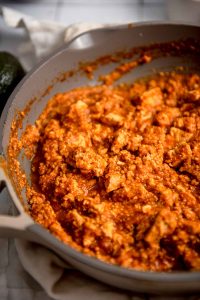
Chipotle-Style Sofritas Cooking Instructions
This article presents a comprehensive guide for creating sofritas, a recipe inspired by Chipotle’s tofu selection. The recipe uses Chipotle’s ingredient list as a foundation, modified for a fresher and well-rounded flavor profile. Sofritas serve as a protein-packed complement to a range of Mexican and Tex-Mex dishes, delivering a hearty, saucy, and spicy plant-based protein alternative.
**Sofritas Ingredients:**
– **Olive oil:** Essential for sautéing the sofrito base.
– **Tofu:** Extra-firm tofu is crumbled and cooked for a smoky essence.
– **Onion, red bell pepper, and garlic:** Constitute the delicious foundation of the dish.
– **Tomato paste and canned diced tomatoes:** Contribute moisture and boost the tomato taste.
– **Adobo sauce or diced chipotle peppers:** Infuse smoky and spicy undertones.
– **Red wine vinegar:** Introduces acidity to elevate the flavor.
– **Dried spices:** Ground cumin, smoked paprika, and oregano deepen the dish.
**Recipe Tip:** Preserve leftover tomato paste and chipotle peppers in freezer bags for later use.
**Uses for Sofritas:**
Sofritas can be included in burritos, burrito bowls, nachos, quesadillas, tacos, or paired with eggs. They complement guacamole or sour cream to temper the heat.
**Recipe Instructions:**
1. Heat olive oil in a skillet, cook tofu until golden brown, then set aside.
2. Sauté onion, bell pepper, and salt until onion becomes translucent.
3. Incorporate tomato paste, vinegar, adobo sauce, garlic, and spices, cooking until aromatic.
4. Mix in diced tomatoes, cook until peppers are soft, then fold in tofu.
5. Adjust seasoning and spice intensity, garnish with cilantro, and serve.
This sofritas recipe yields 4 to 6 portions and can be tailored to your preference. Enjoy the exploration with this adaptable and flavorful dish!
Read More